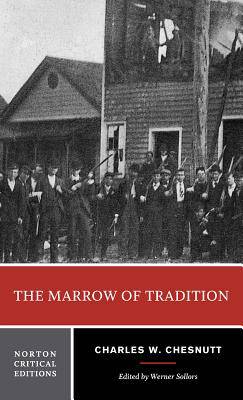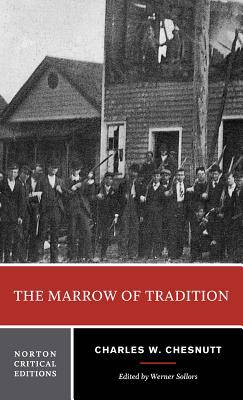
- Afhalen na 1 uur in een winkel met voorraad
- Gratis thuislevering in België vanaf € 30
- Ruim aanbod met 7 miljoen producten
- Afhalen na 1 uur in een winkel met voorraad
- Gratis thuislevering in België vanaf € 30
- Ruim aanbod met 7 miljoen producten
Zoeken
Omschrijving
Inspired by the 1898 Wilmington Riot and the eyewitness accounts of Charles W. Chesnutt's own family, Chesnutt's The Marrow of Tradition captures the astonishing moment in American history when a violent coup d'état resulted in the subversion of a free and democratic election.
The Norton Critical Edition text is based on the 1901 first edition. It is accompanied by a note on the text, Werner Sollors's insightful introduction, explanatory annotations, and twenty-four photographs and illustrations.
"Contexts" connects the novel to the historical events in Wilmington and includes a wealth of newspaper articles, editorials, and biographical sketches of the central players.
The account of riot instigator Alfred Moore Waddell, published just weeks after the event, is reprinted, along with three rarely seen letters: W. E. B. Du Bois's and Booker T. Washington's comments on the novel and Walter Hines Page's letter to Chesnutt. Rounding out the historical record is a selection of 1890s sheet music, a poem, and newspaper articles on the Cakewalk, a popular dance of the period with roots in slavery.
"Criticism" begins with twelve contemporary reviews, including those by Hamilton Wright Mabie, Katherine Glover, William Dean Howells, and Sterling A. Brown. Fifteen recent assessments focus on the novel's characters, history, realism, and violence. As scholarship on The Marrow of Tradition and on Wilmington in 1898 has been especially active since the 1990s, ten assessments are from this period.
A Chronology and Selected Bibliography are also included.
The Norton Critical Edition text is based on the 1901 first edition. It is accompanied by a note on the text, Werner Sollors's insightful introduction, explanatory annotations, and twenty-four photographs and illustrations.
"Contexts" connects the novel to the historical events in Wilmington and includes a wealth of newspaper articles, editorials, and biographical sketches of the central players.
The account of riot instigator Alfred Moore Waddell, published just weeks after the event, is reprinted, along with three rarely seen letters: W. E. B. Du Bois's and Booker T. Washington's comments on the novel and Walter Hines Page's letter to Chesnutt. Rounding out the historical record is a selection of 1890s sheet music, a poem, and newspaper articles on the Cakewalk, a popular dance of the period with roots in slavery.
"Criticism" begins with twelve contemporary reviews, including those by Hamilton Wright Mabie, Katherine Glover, William Dean Howells, and Sterling A. Brown. Fifteen recent assessments focus on the novel's characters, history, realism, and violence. As scholarship on The Marrow of Tradition and on Wilmington in 1898 has been especially active since the 1990s, ten assessments are from this period.
A Chronology and Selected Bibliography are also included.
Specificaties
Betrokkenen
- Auteur(s):
- Uitgeverij:
Inhoud
- Aantal bladzijden:
- 576
- Taal:
- Engels
- Reeks:
Eigenschappen
- Productcode (EAN):
- 9780393934144
- Verschijningsdatum:
- 23/05/2012
- Uitvoering:
- Paperback
- Formaat:
- Trade paperback (VS)
- Afmetingen:
- 130 mm x 211 mm
- Gewicht:
- 544 g

Alleen bij Standaard Boekhandel
+ 40 punten op je klantenkaart van Standaard Boekhandel
Beoordelingen
We publiceren alleen reviews die voldoen aan de voorwaarden voor reviews. Bekijk onze voorwaarden voor reviews.











